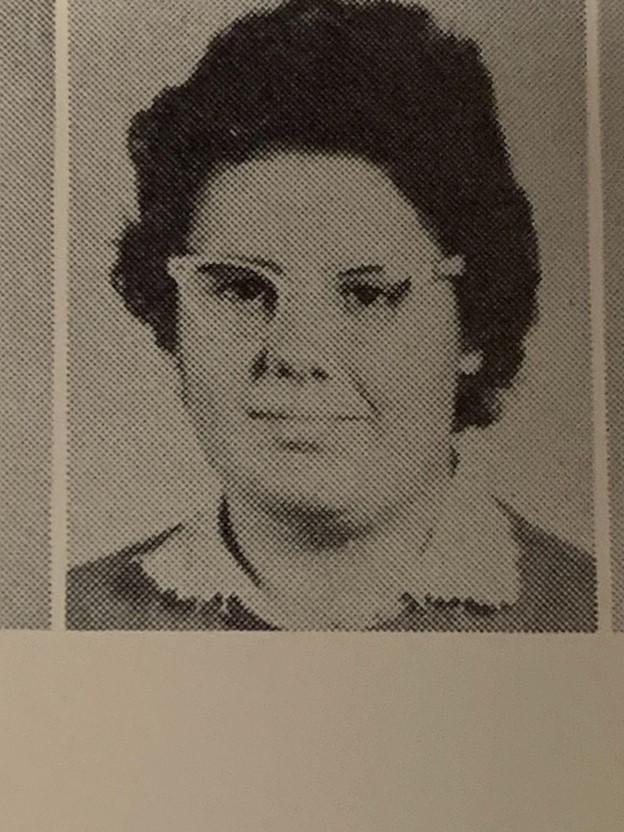Lack of classroom space proves challenging
Loudoun County High School was designed in the 1950s, when classes were run much differently. No one had Chromebooks or phones, and students were expected to sit passively in neat rows while the teacher led lessons. Education has evolved since then, but the classroom footprints of our building have remained the same.
Over the years Loudoun County has become overcrowded with students. Being an old school, there are already several classrooms that don’t meet the Virginia Department of Education recommendation size.
Of the 70 rooms we measured, 39 fell short of the recommended 700 square feet for high school classrooms. Most of the rooms that meet or exceed the state’s recommendations are science classrooms in the newer wing of the school.
The room sizes became even more complicated when it was decided for rooms to be split in half. The construction for this was started during the summer but finished after the school year began.
The result was that several classrooms have fewer than 500 square feet. For comparison, according to decorsnob.com, the average living room size in the United States is 340 square feet. Imagine having a class of 25 students meeting in a room not much larger than your living room.
While cutting the rooms in half added more classrooms to try to solve the overcrowding issue, it had produced a new problem. Classes containing too many students for the room size.
“It is very difficult to teach in different size classrooms.” World Languages and Cultures teacher Matthew Landers said. “It is difficult, almost impossible, to walk around while I am instructing.”
Social Science and Global Studies teacher Phil D’Arcangelis shares a similar opinion.
“I can’t move around as much as I’d like.” D’Arcangelis said. “It’s uncomfortable and a little invasive.”
English teacher Allie Strosnyder said that even students have complained about feeling cramped in the rooms.
“The guitar room is so small I almost kneed a kid in the face.” Evan Sutton said. “We were very cramped.”
Sutton isn’t the only student that has had problems with the classroom sizes.
“I was sitting at the end and a girl was sitting at the side, and she would constantly push her chair back into mine, where I had to sit so close to the desk.” Layla Maye said of one of the classrooms that had been cut in half this summer. “It sucked. It was a big number of students in that class, so it was always really cramped.”
Many of the teachers have had to modify the way they teach to accommodate the size of their classrooms.

For most teachers, the small class size impacts their ability to do group lessons. English teacher Tracie Lane wishes that the seating arrangements could be more reflective of the needs of her lessons. “It is very challenging to conduct a group discussion where everyone can see and respond to each other,” Lane said.
English department chair Beth Williams agrees. Her classroom is only about 470 square feet. She speculates that with a larger classroom, “we could do more group work, use the interactive board more, do activities that require movement, and do gallery walks in the room.”
Some teachers that work at Loudoun County have seen the rooms at the newer schools and feel very strongly about the differences between Loudoun County’s room sizes.
“It is quite embarrassing that we are even having this conversation,” Landers said. “The lack of equity between the older schools and the newer cathedrals that are being built, is insulting to those who work in the older buildings.”
Recently the future of the school has been being discussed as to whether or not the school should be rebuilt or substantially renovated in coming years.
Social science and global studies teacher Kevin Hale prefers keeping the historic school standing. “I love the History and Legacy of our school,” Hale said. “ I will make due with the small size because the only real alternative would be to tear down the school and build a three or four story new building. That would be a travesty.”
However, D’Arcangelis has a different opinion. “It really needs to be demolished and rebuilt. Sad, but true. It’s inefficient and has a lot of issues from water damage to improper ventilation to just looking old and ugly.”
English teacher Kathryn Ives suggests a more neutral solution. “Knowing that they are larger, my thought is that the school system can solve the problem without having to make a fancy new school for us here at LCPS,” Ives said. “Instead, they could redraw the school zone lines so that our student numbers were lower. We don’t necessarily need bigger rooms; instead, we need fewer students in each room.”
Your donation will support the student journalists of Loudoun County High School. Your contribution will allow us to purchase equipment and continue to print our issues for the students at our school.

Hannah Winegar is a senior at Loudoun County High School. This is her second year writing for the LCHS Newspaper.






















